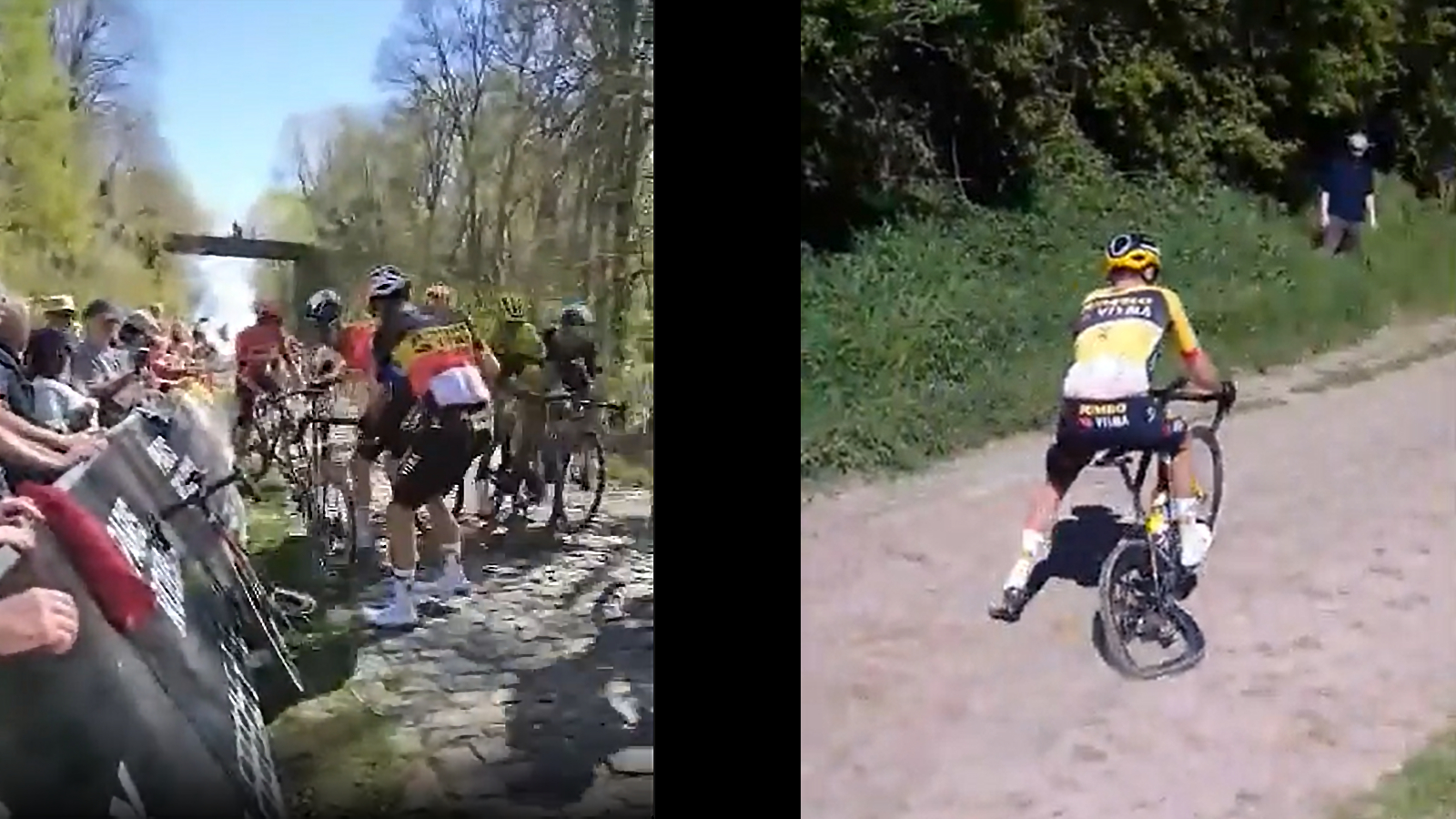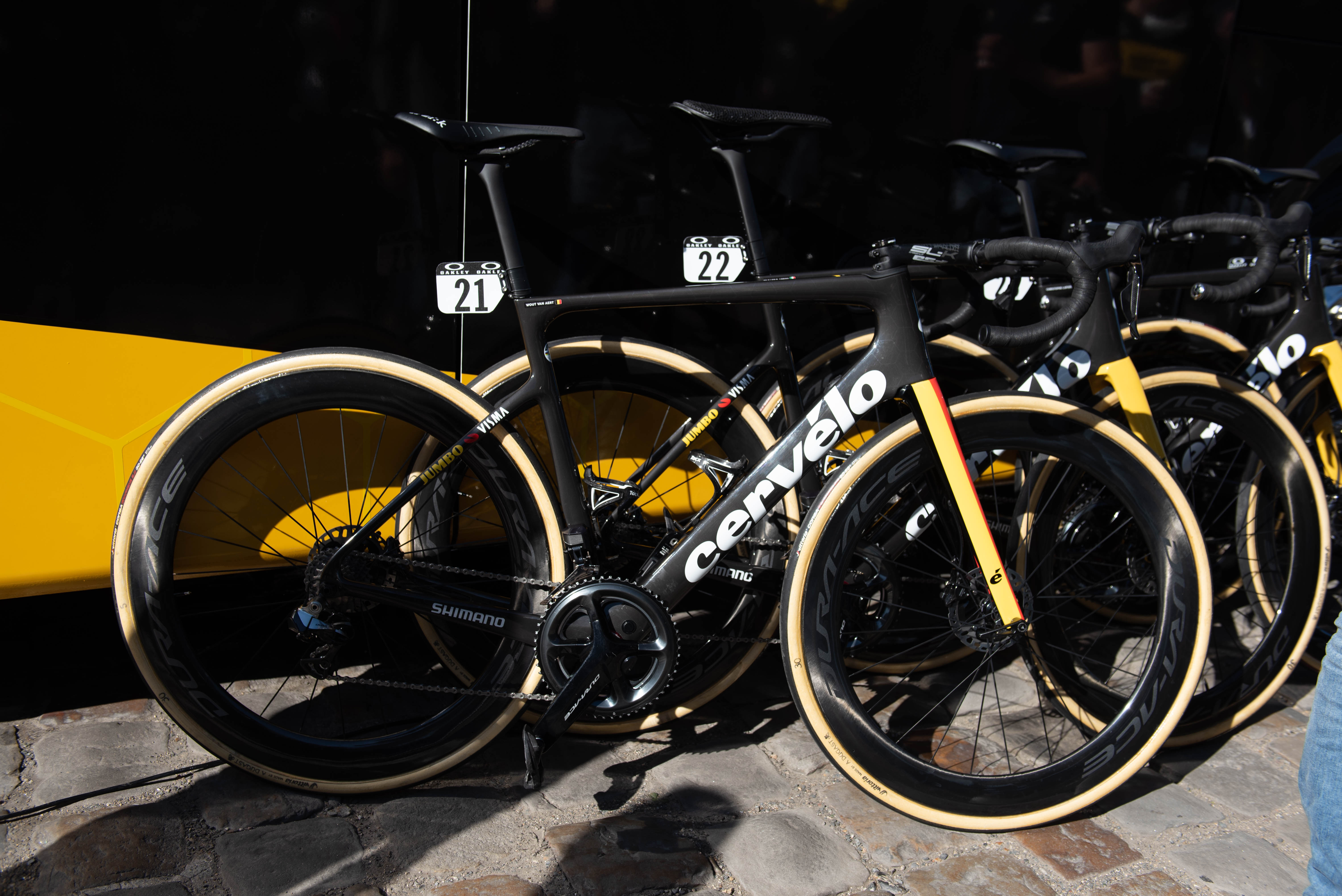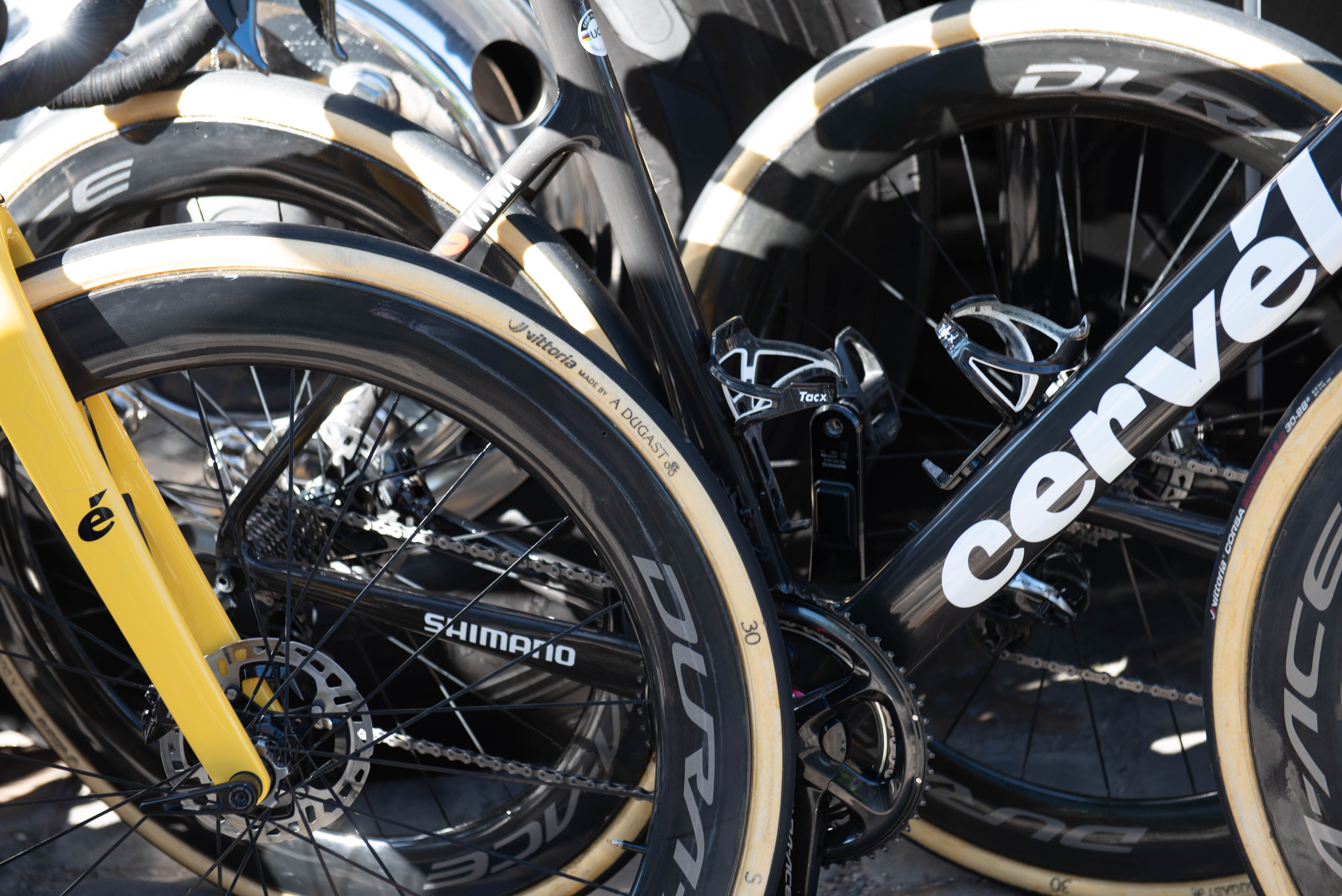Two of Jumbo-Visma's Shimano wheels fold in half at Paris-Roubaix
The brutality of the cobbles takes its toll on Van Aert's and Laporte's bikes

Two of Jumbo-Visma's favourites for Paris-Roubaix success, Wout van Aert and Christophe Laporte, fell foul of an unusual mechanical issue during the race. In two completely unrelated incidents, both riders saw their Shimano Dura-Ace 9100-series tubular rear wheels crack and fold in half beneath them.
The first incident occurred as Wout van Aert tackled the infamous Forest of Arenberg. TV cameras noted the Belgian on teammate Timo Roosen's bike, but the original reasons were unclear. However, footage from the side of the road since shared on Timo Roosen's Instagram account, reveals that Van Aert's rear wheel folded in half, and a quick bike swap with Roosen allowed Van Aert to continue.
A post shared by Timo Roosen (@timo_roosen)
A photo posted by on
Laporte's incident was elsewhere on the course, and also comes courtesy of roadside footage in which the Frenchman can be seen surfing his bike as the wheel buckles beneath him, forcing him to come to a halt.
Malheureux accident de Christophe Laporte sur le secteur pavé de Saint-Python, plus de peur que ne mal c'est là que l'on reconnaît un professionnel, courage à tous les coureurs !! @lequipe @France2tv @Paris_Roubaix @LAPORTEChristop pic.twitter.com/JCaaduiPW8April 17, 2022
A spokesperson for Team Jumbo-Visma has confirmed that both riders were attempting to ride with punctured rear tyres prior to the respective failures taking place.
Equipment explained
For reasons not completely understood, all of the Jumbo-Visma riders' Cervélo bikes were fitted with the old 9100-series Shimano Dura-Ace groupset. This is despite the fact that the team has access to - and has been using - the newer iteration (R9200) of the groupset in its entirety, as well as mixing the 12-speed R9200 groupset with the 11-speed R9100 chainset.
Speculated reasons for the reversion to 11-speed are the increased frequency of chain drops when mixing 11 and 12-speed, or alternatively, the preference for the logistical simplicity of having all riders on the same equipment in what is a highly complex race for the team mechanics.

The result is that the team was also forced to use the old R9100 series Dura-Ace wheels. The reason for this is more simple, in that the freehub on the new wheels is not backwards compatible with an 11-speed cassette.
Get The Leadout Newsletter
The latest race content, interviews, features, reviews and expert buying guides, direct to your inbox!
The wheels in question were tubular, which had been the tyre interface technology of preference for decades until the recent rise of tubeless tyres. The tyres they opted for were a cotton-wall Dugast (now owned by Vittoria), in 30c widths.

Tubular tyres promise a few benefits over their tubeless or clincher counterparts. The reduced weight of the wheel is one benefit, but the main advantage is the fact that the tyre is glued to the rim, meaning that if the tyre were to puncture, it will remain in situ and allow the rider to continue riding - albeit slightly more gingerly - until their team car catches up.
This is common practice in the WorldTour, and while it is commonly considered safe on the smooth roads of a typical bike race, it's likely that the brutality of the cobbles in Paris-Roubaix proved too much. The repeated impact of square-edged stones on a carbon rim protected by nothing but an uninflated layer of rubber is, unsurprisingly, not part of a wheel's intended use. Jumbo-Visma were unlucky to find that out the hard way on two occasions.
The incidents could become yet another nail in the coffin of tubular tyres as tubeless continues its rise to prominence. Tubeless tyres, in contrast, claim to self-seal and prevent the need for the rider to stop at all, and can be run with a foam insert inside to cushion the blow of sharp impacts. However, they're not without their faults. If the tyre failed to seal, it would likely come off the rim and leave the rider forced to stop immediately, a situation experienced by numerous other riders during Sunday's race.
Ultimately, no tyre system is perfect, and riders know that continuing to ride on punctured tubular tyres comes with it an inherent risk of failure. It just so happens that to these riders, the cost of that failure is worth the risk when the alternative is standing still at the roadside.

Josh is Associate Editor of Cyclingnews – leading our content on the best bikes, kit and the latest breaking tech stories from the pro peloton. He has been with us since the summer of 2019 and throughout that time he's covered everything from buyer's guides and deals to the latest tech news and reviews.
On the bike, Josh has been riding and racing for over 15 years. He started out racing cross country in his teens back when 26-inch wheels and triple chainsets were still mainstream, but he found favour in road racing in his early 20s, racing at a local and national level for Somerset-based Team Tor 2000. These days he rides indoors for convenience and fitness, and outdoors for fun on road, gravel, 'cross and cross-country bikes, the latter usually with his two dogs in tow.